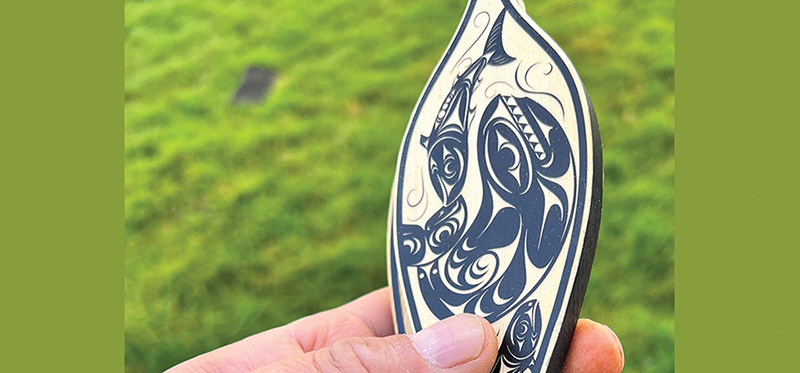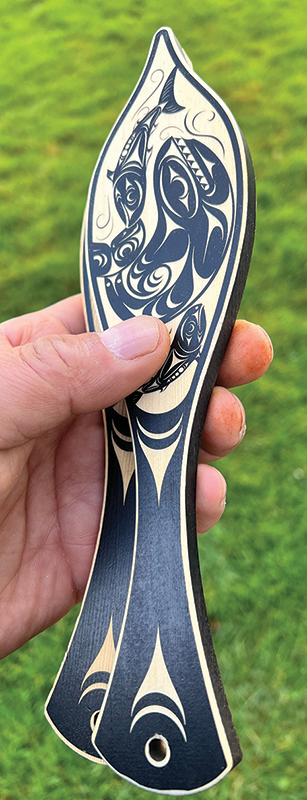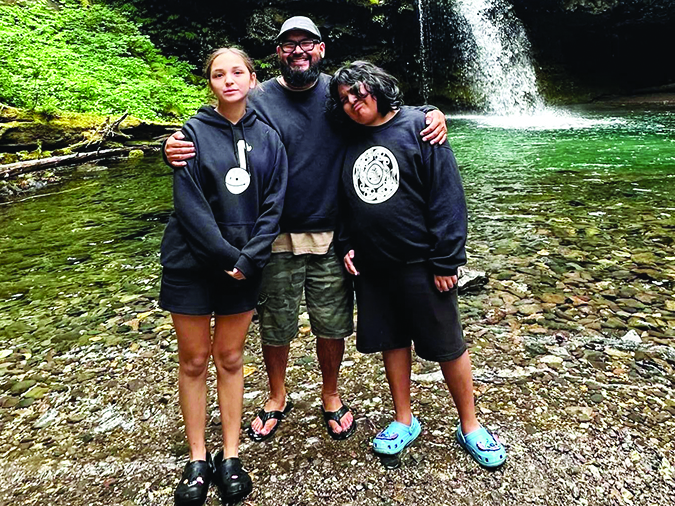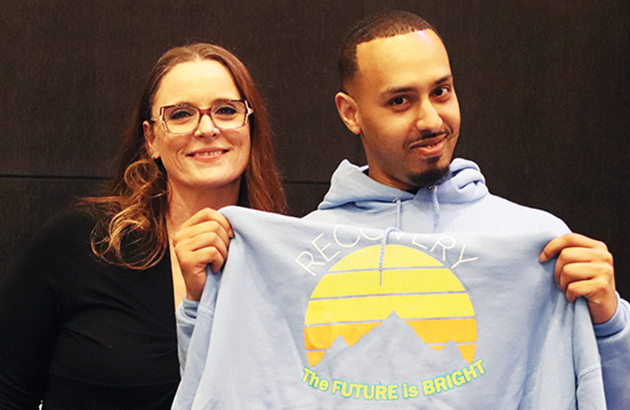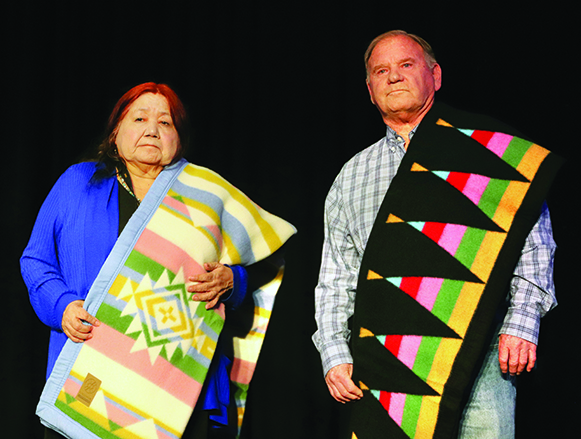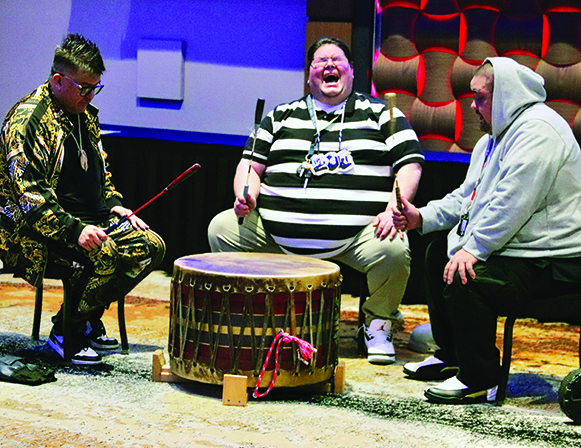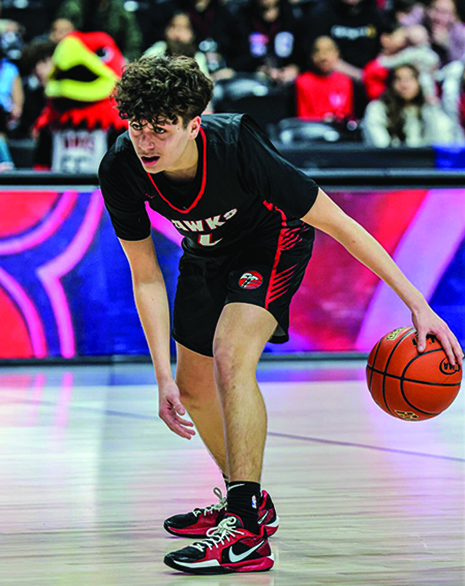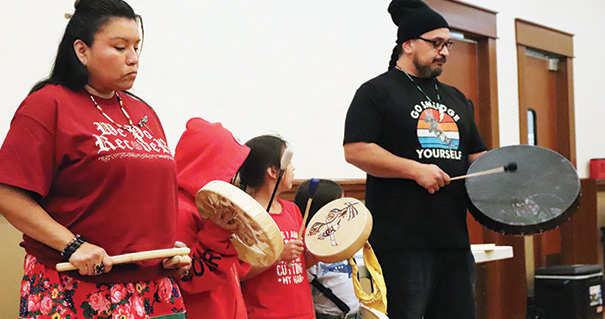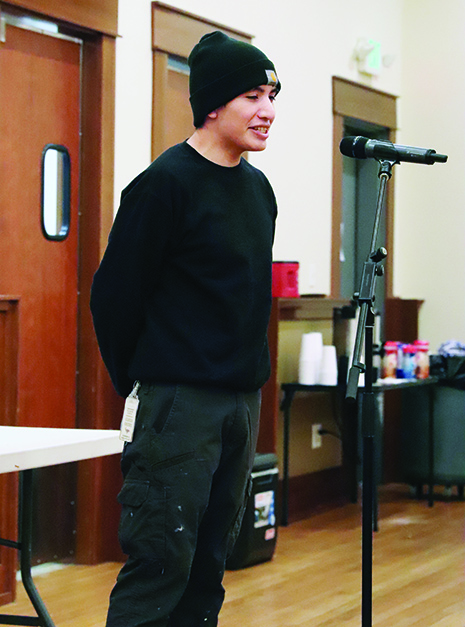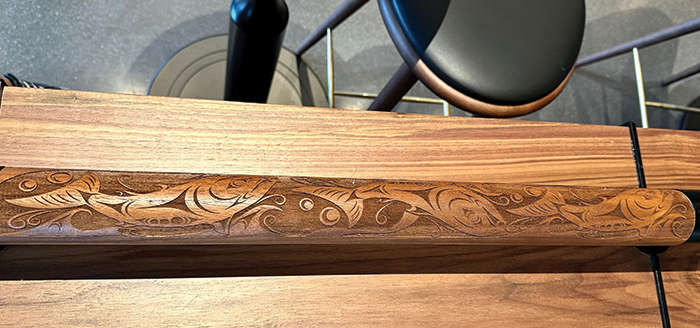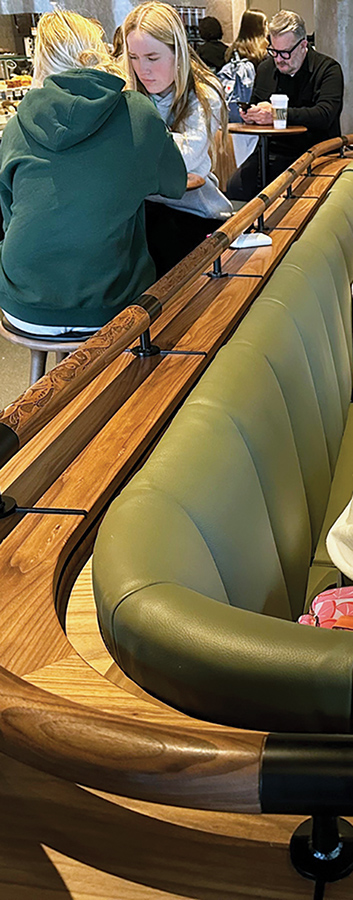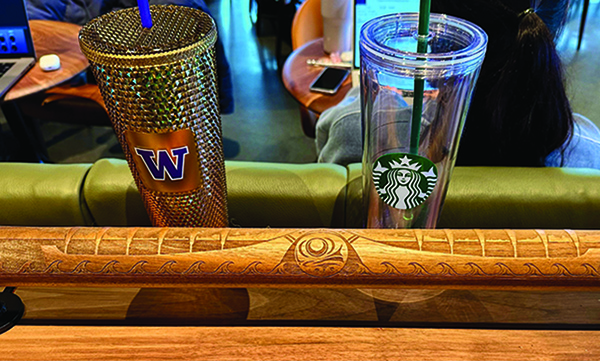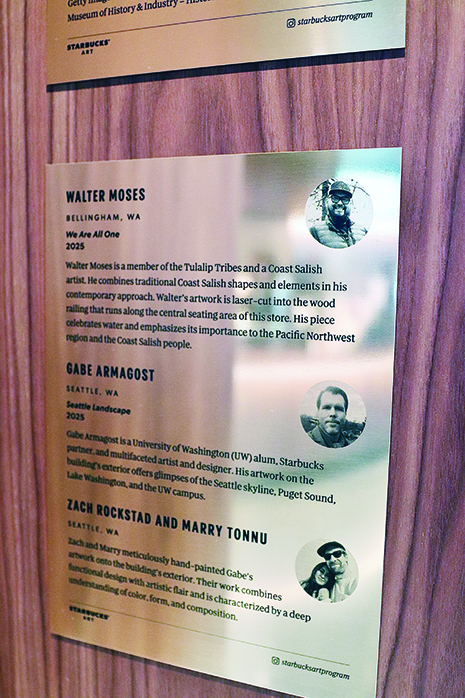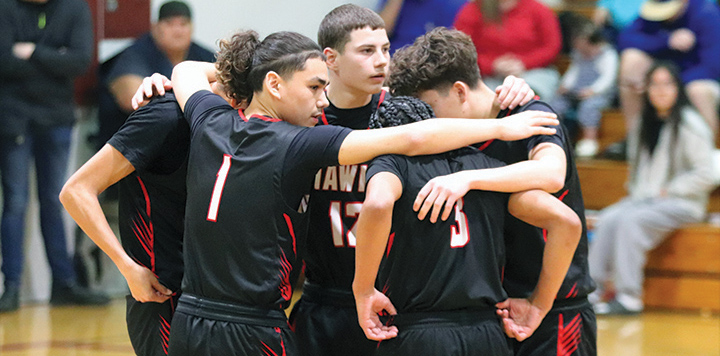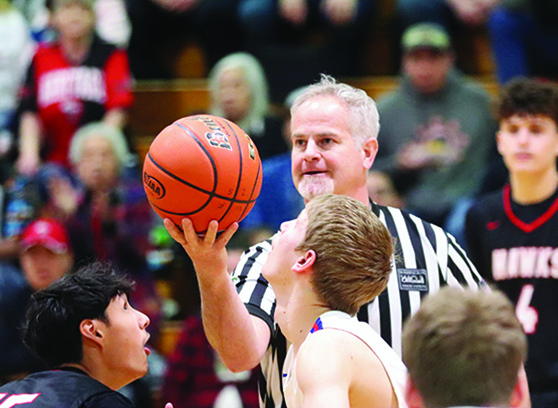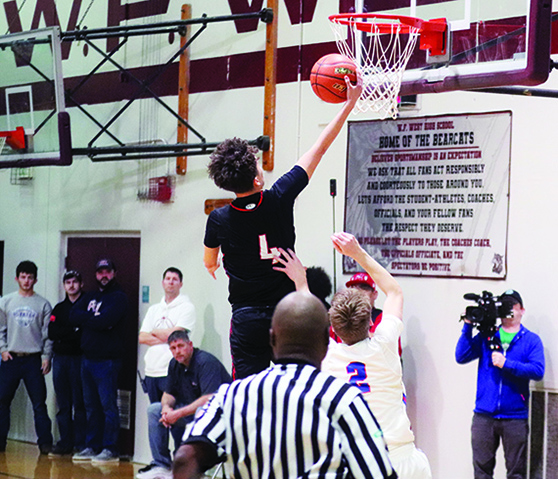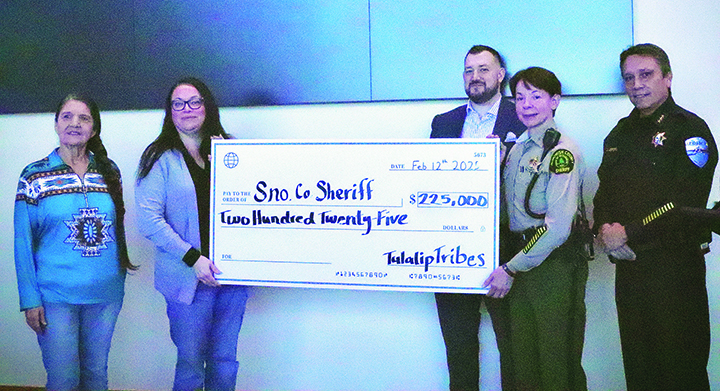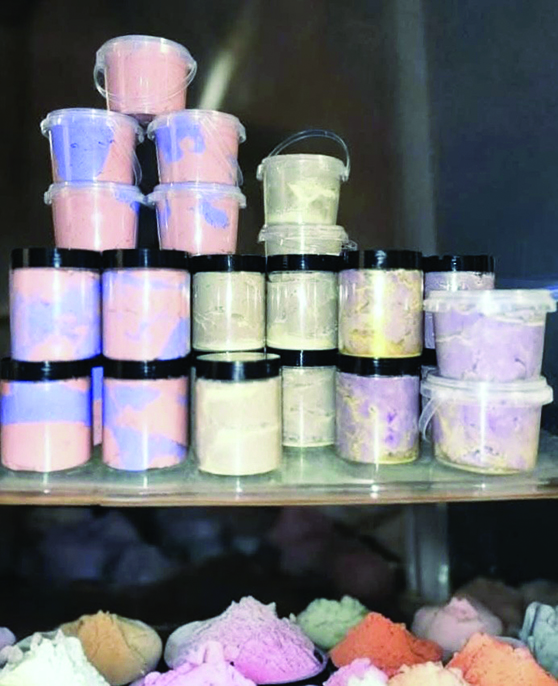
By Kalvin Valdillez, Tulalip News
A powerful and highly regarded traveling exhibit will make its final stop at the Hibulb Cultural Center gallery this summer. Touring for the past couple years, Portraits in RED has brought attention to the ongoing Missing and Murdered Indigenous Women/Persons (MMIWP) crisis happening in America by featuring the paintings of Métis Nation artist, Nayana LaFond, at several museums across the nation.
Portraits in RED was initially set for its last viewing at a museum in Oregon, but after hearing how close LaFond’s works were to Tulalip, HCC reached out in hopes of bringing the exhibit here. LaFond started this project in 2020 during the pandemic and has painted close to 50 portraits of Indigenous women and men who were murdered or are still missing, their families and friends, as well as athletes, actors, and activists who have raised awareness for the cause.
Her artwork is a strong visual representation of the MMIWP movement and showcases each subject in black and white. The sole color on each canvas is red, which highlights a handprint painted across their face, which has become the national symbol for the movement and signifies that people are taking a stand for those who were silenced by the epidemic.
Over recent years, the movement has gained a bit of momentum throughout the country which resulted in May 5th becoming the National MMIWP Awareness Day. However, even with this progress, the epidemic continues to affect Tribal nations at an alarming rate. Currently, Indian Country is standing with the Apache Nation after news broke out of the murder and dismemberment of Emily Pike, a teenager whose body was found in trash bags last month. Not surprisingly, the coverage and reporting of this story has been minimal and the case has not received major headlines or garnered much support and outrage of Americans, like in similar cases of white females who have gone missing, such as Gabby Petito.
The epidemic has hit Tulalip hard as well. At the 2024 MMIWP gathering, it was revealed that 12 of the Tribes’ membership fell victim to this crisis: Cecil Lacy Jr., Anthony Kitsap Sam, Bridgette Simpson, Nina Mae Dell, Kyle Van Jones-Tran, Sophia Solomon, Hayleigh Jo McGhie, Jessica Christian Jones, Andrew M.L. Fryberg, Gina Blatchford, Jolene Leanne Flores, and Mary Davis Johnson. Last summer, a documentary titled Missing from Fire Trail Road was featured at film festivals across the country. The documentary was about the sudden disappearance of Mary Davis Johnson and her family’s quest for answers. If you have yet to see Missing from Fire Trail Road, it is currently streaming on Hulu.
HCC is planning to debut Portraits in RED at the end of June and will feature the exhibit through August. If you are reading this and your family has been impacted by the MMIWP crisis, the cultural center is asking that you take part in this exhibit and share your story to help raise awareness about your loved one’s case. As always, the HCC will incorporate local history and interactive displays. Those who visit the exhibit will get the chance to write a personal message to MMIWP victims on a dedicated wall of the gallery.
Said HCC Senior Curator, Emilie Miller, “I think with the documentary coming out, it started that conversation and put it on the forefront of a lot of people’s minds. With the exhibit being so close in Oregon, I think it all coincided and worked out really well to bring it here and bring even more awareness to it. We’ve seen more cases that have come out in the United States just recently. It’s still an ongoing problem. It’s still something that hasn’t been dealt with, and who knows what’s going to happen with the current administration, and so we just want to keep it on the forefront of people’s minds.”
Read more about Portraits in RED in the following HCC official press release. To share your story or for more information, please contact the museum at (360) 716-2600.
Hibulb Cultural Center Media Release
“Portraits in RED” by Nayana LaFond is a deeply personal and impactful art project that sheds light on the ongoing epidemic of Missing and Murdered Indigenous Peoples (MMIP). This crisis disproportionately affects Indigenous communities across North America, with Indigenous women and girls being particularly vulnerable. Indigenous people are more than twice as likely to experience violent crime compared to non-Indigenous people, and Indigenous women and girls are especially at risk, being murdered or going missing at much higher rates than women from other demographics. For example, in the U.S., the National Crime Information Center reported over 5,700 cases of missing Indigenous women in 2016, though the actual number is believed to be much higher due to unreported or misclassified cases. The epidemic continues to be a significant issue, with ongoing calls for systemic change in how law enforcement and government agencies address the crisis.
Through a series of painted portraits, LaFond commemorates the lives of Indigenous individuals and families affected by this violence, offering a medium for remembrance, healing, and advocacy. The project, which has never profited from the artwork, focuses on returning the portraits to families in its final phase, allowing them to choose whether the artwork is kept, donated to institutions, or sold to raise funds for the families or a related charity.
“Portraits in RED” serves not only as a memorial but also as a call to action, drawing attention to the systemic violence and erasure faced by Indigenous communities while creating space for healing and solidarity. Through LaFond’s work, the exhibit offers a profound reminder of the resilience and importance of those whose stories have too often been overlooked.
